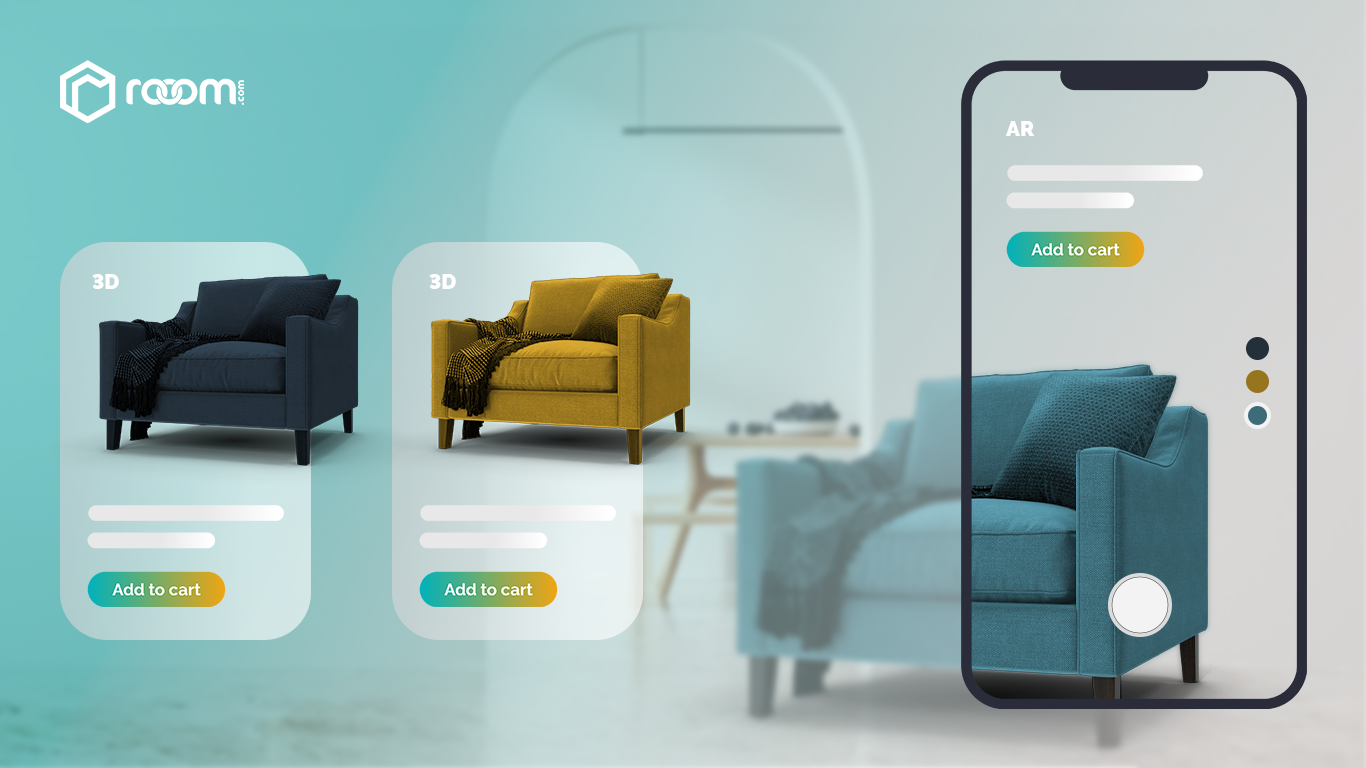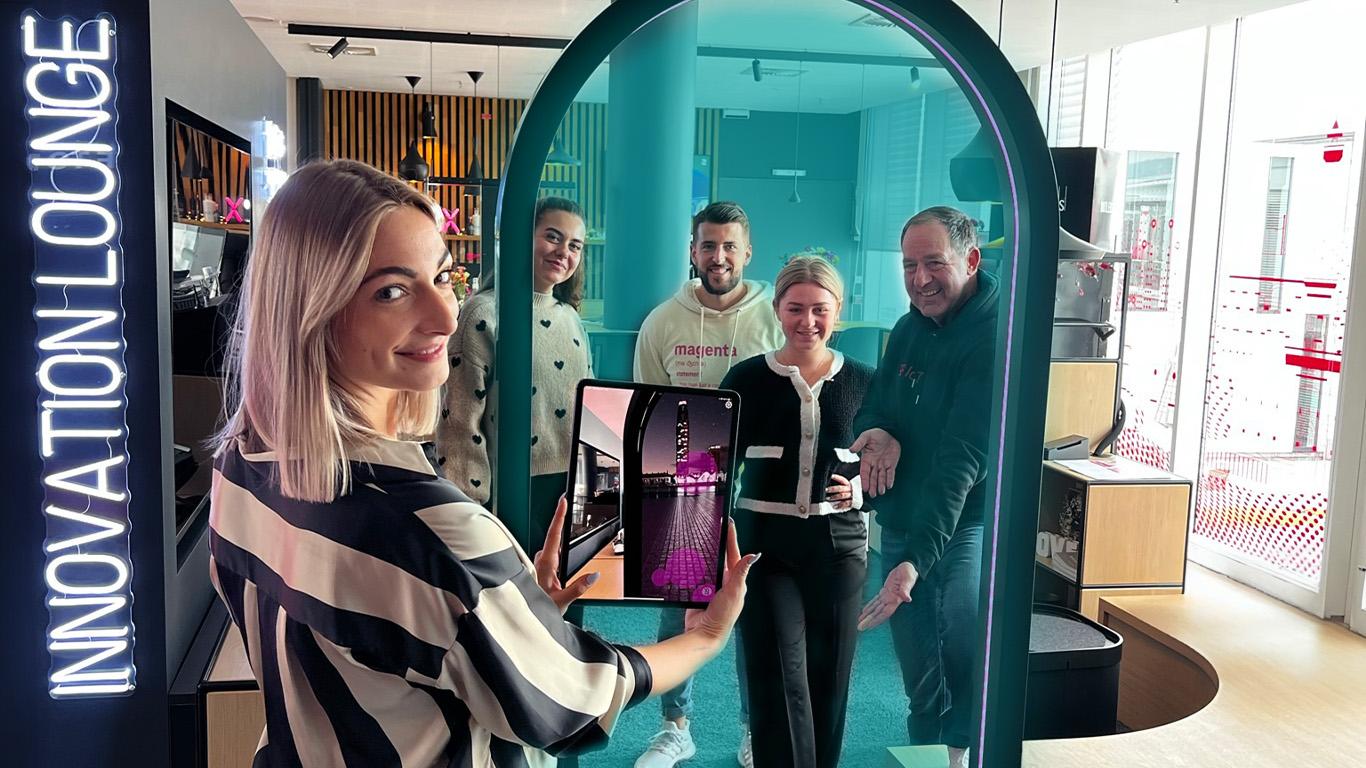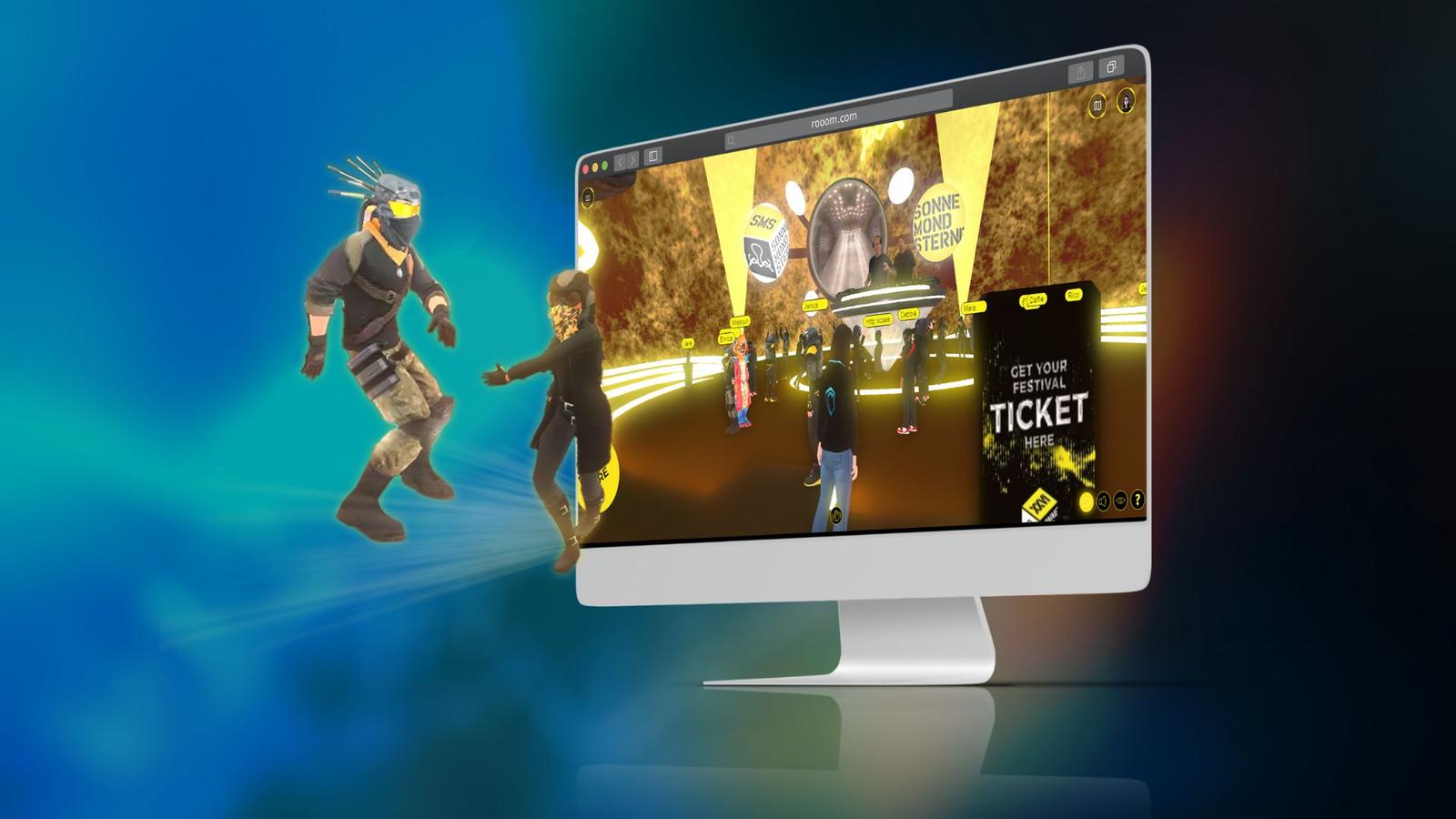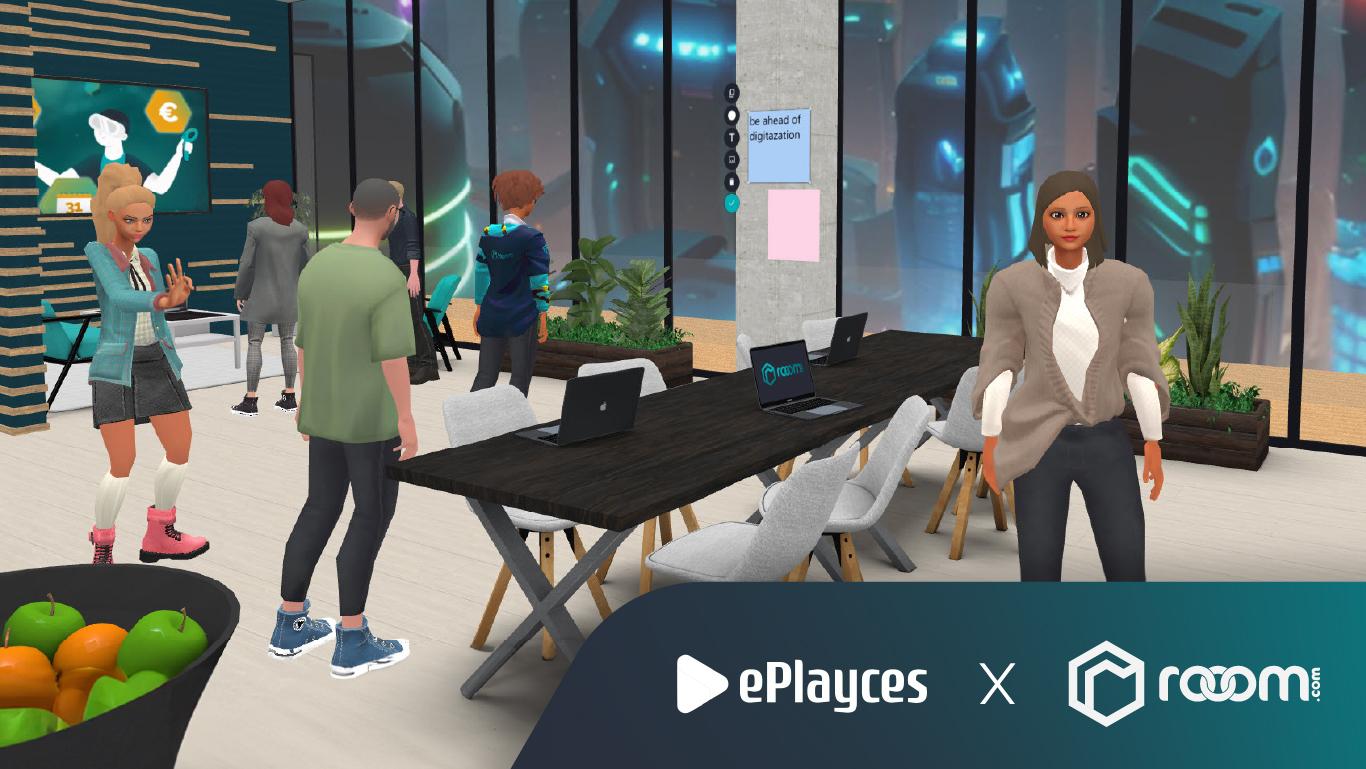Blog
Experiential marketing with immersive technologies

- Hot Topics
- Feature Spotlights
- Blog
Experiential marketing is a strategy that aims to create emotional connections between customers and companies through unique experiences. This blog post looks at the benefits and potential uses of immersive technologies such as augmented and virtual reality in experiential marketing.
Definition of experiential marketing
Experience marketing (also known as engagement marketing or live marketing) is a form of advertising that aims to create adirect bond and interaction with customers. The focus is on appealing to the human sensory organs. An emotional, positive experience is to be created through a direct experience, with the aim of long-term customer loyalty. In contrast to traditional marketing strategies such as radio commercials, newspapers and flyers, it is not about passive but active consumption of content.
Advantages of experiential marketing
Especially for products and services that are consumed by a younger target group, experiential marketing is an essential part of winning customers and standing out from the competition. Successful use of experiential marketing has numerous benefits for companies:

- High level of engagement: Through experiential marketing, customers can immerse themselves in the brand world of the company, its vision and values, and feel their own connection and responsibility
- Higher sales: The exciting presentation of products or services with a wow factor is more likely to induce a purchase
- Strengthened brand image: Customer trust increases the company's reputation, and an emotional bond ensures long-term customer relationships
- Competitive advantage: Companies can differentiate themselves from the competition through unique experiences
Possible applications of immersive technologies
Technologies such as 3D, VR and AR are already playing an important role in the field of experiential marketing. In contrast to analog experiences with wheels of luck and giveaways, these innovative technologies can open new doors in marketing. Users, especially the younger generations, are enthusiastic about technological experiences and are particularly open to new technologies.

VR and AR are suitable tools for acquiring, retaining and winning back customers in the pre-sales stage, sales stage and post-sales stage. Interactive experiences not only get you in touch, make new contacts and generate leads, but also leave a lasting impression at trade fairs, for example.
Virtual Reality
Virtual reality makes it possible to give customers an up-close product or service experience. Virtual showrooms or branded worlds in 3D can be displayed not only on the website or in the online store, but also via VR. This turns a trade fair stand into a technology experience.

Virtual Reality vs. Augmented Reality
In Augmented Reality (AR), the real world is overlaid with digital content that contains additional content or information. In contrast, as the name suggests, in Virtual Reality (VR) everything takes place in digital space. This requires certain equipment, such as VR headsets, to fully immerse users in the virtual experience.
Augmented Reality

From virtual photos and videos with landmarks, avatars or mascots to digital competitions and quizzes with AR objects as rewards: Experiences with augmented reality can have an impressive effect. Guests at Osterburg Castle in Thuringia for example can experience an interactive tour via an AR app. There are several stations where you can learn about the castle and its history in a fun way.
"The digital solutions from rooom are a key success factor for tourism in our region! The mixed reality app allows visitors of all ages to experience nature and culture and imparts knowledge in a sustainable way." OLAF SCHUBERT | City Forester Jena
The digital solutions open up numerous other possibilities. With interactive 3D models, for example, you can stand out from the competition at trade fairs. Using AR, visitors can be guided through rooms independently and receive interesting input. Here, you can also make the experience even more exciting with AR glasses. Overall, the technologies offer enormous added value for companies, enabling them to strengthen their market presence in the long term.
Best Practices
There are a variety of solutions for the successful implementation of digital experiential marketing. Attention must be paid to this: Who should be addressed, in what way, where and with which content. Impressive AR and VR applications are particularly suitable for acquiring new customers and making contact with new partners or leads.
In order to create added value for the company, rooom offers innovative solutions and features that may also be suitable for your campaign. A large number of companies are already using immersive solutions that make experiential marketing more exciting. Here is a brief overview:
AR Portale
The rooomPortal provides a unique digital experience. Using AR, it is possible to enter a virtual world through an archway. The portal causes a stir, especially at trade fairs, in showrooms or flagship stores. Companies and brands such as Bayer Leverkusen, Porta and Maggi use it to immerse their customers in their corporate, digital world. The portal is also suitable as a permanent installation, such as in Deutsche Telekom's Customer Experience Center in Bonn, as content can be changed at any time and the experience is fun every time.
3D Spaces

Interactive 3D environments open up a range of options: from digital showrooms to virtual brand experience worlds. The Blum Group, for example, offers a virtual apprenticeship center for potential trainees, where they can not only find out about the various apprenticeships, but also get in touch with the right training supervisor at the same time. The 3D spaces can be discovered both with VR glasses and via the company website and can be combined with playful applications such as treasure hunts or competitions.
3D product visualizations
Interactive 3D product views can generate great interest. The models promise fantastic animations, lots of information and a 360° view. Especially for high-tech products and machines that are difficult to transport, the 3D representations offer the possibility of virtual presentation without the physical presence of the products. In addition, an integrated augmented reality function with rooomProducts makes it possible to project the models into the real environment and thus provide customers with a hybrid experience.
Tourism

Interactive AR apps can be used to guide guests through attractions or museums. From nature trails to exhibitions, every environment can be accompanied by videos, audio guides, images, animations or even avatars, such as personalities from the past.
As a cultural enrichment in Jena, Natura jenensis combines virtual with analog activities as a nature experience region. Not only are you guided through a unique and protected natural landscape, but you also receive input about the region and its history via an AR app. 360° panoramas, 3D objects and a wealth of information make the four trails an exciting hybrid nature experience.
4 tips and tricks for hybrid experiential marketing
- Understand the customer context: Before you start an experiential marketing campaign, you should take a close look at the needs and requirements of your target group. The focus is on creating an individual experience. With digital experiences in particular, the focus is on a young audience.
- Appeal to emotions: Emotional experiences are the key to long-term customer loyalty. Which emotion best suits the product or brand and how can this emotion be evoked through an experience? Virtual 3D spaces, for example, can be equipped with color themes or music that trigger a certain feeling.
- Repeatability: Create experiences that can be repeated several times to enable customers to share them. Digital spaces or product views are particularly suitable, as they can be made accessible not only at a temporary event, but also in the long term via the internet. This also makes it easy to exchange content and information for modified reuse.
- Sustainability: Criteria such as emissions, flexibility and the use of resources also play a role in modern marketing. For example, some VR applications consume more energy than others. It is worth taking a look at computing power and data optimization.

Would you also like to make your experiential marketing more immersive? rooom offers a flexible platform for experiences in 3D, AR and VR. From consulting to the finished experience, we are at your side as your partner.
Experiential marketing = competitive advantage
Experiential marketing offers an effective way for companies to stand out and build long-term customer loyalty. According to a study by Bitkom, 29% of companies are already using AR and VR applications in their marketing strategy and at trade fairs, and the trend is rising. Creating unique and memorable immersive experiences can not only increase company awareness, but also improve customer engagement.

Innovative technologies such as 3D, VR and AR offer a wealth of opportunities to inspire customers even more and make a lasting impression. In contrast to conventional experiential marketing, these new technologies enable the use of imagination and creativity. With the right planning, objectives and implementation, virtual experiential marketing can ensure long-term success as part of the marketing strategy.














